Search Images
Browse Content (p. 920)
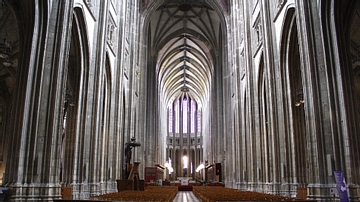
Image
Orleans Cathedral Interior
The interior of the Gothic Cathedral of the Holy Cross, Orléans, France. 13-14th century CE.
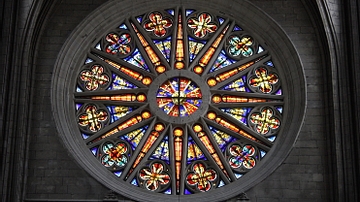
Image
Rose Window, Orleans Cathedral
The 19th century CE rose window of north transept of the Gothic Cathedral of the Holy Cross, Orléans, France. 13-14th century CE.
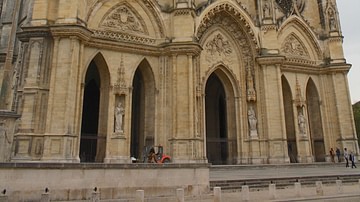
Image
Cathedral of the Holy Cross, Orleans
The facade of the Gothic Cathedral of the Holy Cross, Orléans, France. 13-16th century CE.

Image
Arthur Draws Excalibur, Vulgate-Cycle
An illustration of King Arthur drawing the enchanted sword Excalibur from the sword. From the Vulgate Cycle manuscript (1316 CE) in the British Library, London.
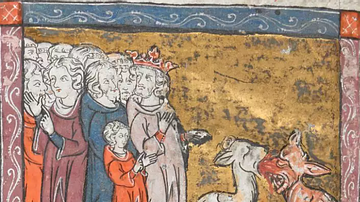
Image
Merlin Reveals the Dragons to Vortigern
Merlin showing King Vortigern (c. 5th Century CE) the dragons beneath his castle. From the Vulgate Cycle manuscript (1316 CE) in the British Library, London.
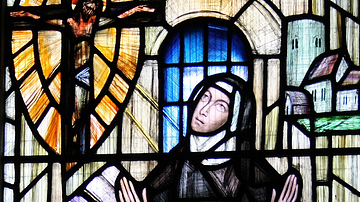
Image
St. Julian of Norwich in Prayer
A stained glass window depicting St. Julian of Norwich (c. 1342 - c. 1416 CE) in prayer. From the Norwich Cathedral in England.
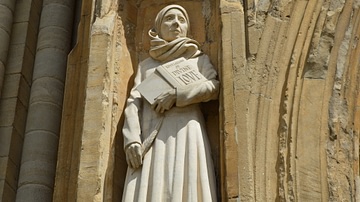
Image
Statue of Julian of Norwich
A statue of St. Julian of Norwich (c. 1342 - c. 1416 CE) in the Norwich Cathedral, England.
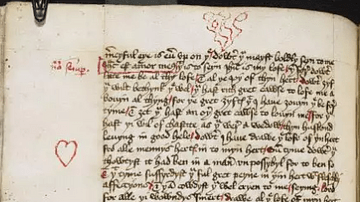
Image
Page from The Book of Margery Kempe
A page from The Book of Margery Kempe, probably copied from the original c. 1440 CE. This work was first dictated by Margery Kempe (c. 1373 - c. 1438 CE) in the mid 15th Century CE and may be the oldest surviving English biography. This...
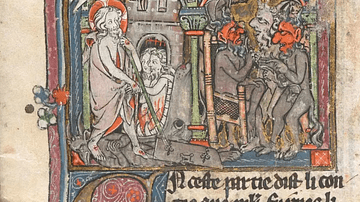
Image
Devils Plotting the Birth of Merlin, Vulgate Cycle
A detail of a miniature portraying God opening Hell, in which devils gather and plot to create an evil being by fathering a child on a mortal woman. This child, through baptism and blessings, is made good and grows up to be the wizard Merlin...
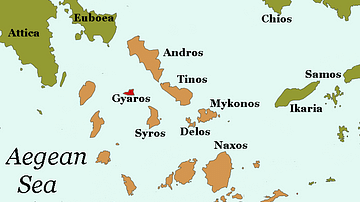
Image
Map of Gyaros
A map of Gyaros, a barren island in the Cyclades. Gyaros' remote, desolate location inspired its use as a place of exile during Antiquity, and has been used for this purpose in more recent history.